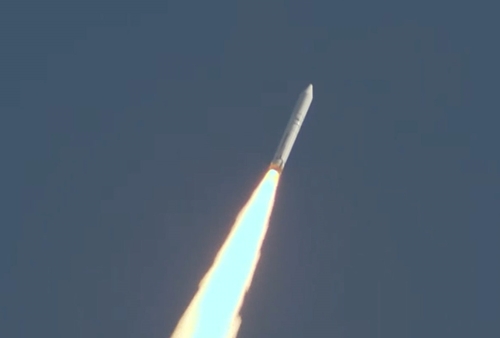November 09, 2021 | 15:36 (GMT+7)
Launch of NanoDragon into space affirms capacity of Vietnam’s space industry: Ambassador
The launch of made-in-Vietnam satellite NanoDragon has gone into history and marked a new development milestone of Vietnam’s space industry, Vietnamese Ambassador to Japan Vu Hong Nam said following the successful launch on November 9 morning at the Uchinoura Space Centre in Kagoshima prefecture.
This event once again proves that Vietnam can fully master and develop its own space industry, Nam told Vietnam News Agency correspondents in Japan.
He stated that all stages in the manufacturing process of NanaDragon were carried out in Vietnam, demonstrating the development and initiative of Vietnam on the path of gradually mastering satellite manufacturing technology.
    |
 |
|
Launch of NanoDragon into space affirms capacity of Vietnam’s space industry. |
Vietnam chose Japan to launch NanoDragon because it is a partner to coordinate and support Vietnam in testing small satellites, he stated, adding that this is a symbolic cooperation for the friendship and reliable relationship between the two countries within the framework of the Vietnam - Japan extensive strategic partnership towards the 50th anniversary of establishment of bilateral diplomatic ties in 2023.
The diplomat also expressed his honor to be a representative of the Vietnamese Government to witness the launch at the Uchinoura Space Center.
At 9:55 a.m. (Japan time) on November 9, the fifth Epsilon solid-fuel rocket carrying NanoDragon and eight other small satellites of Japan were successfully launched into outer space.
NanoDragon, a nano-layer cubesat satellite which weighs around four kilograms, was developed by the Vietnam National Space Centre (VNSC) under the Vietnam Academy of Science and Technology. The development of the NanoDragon satellite is part of VNSC's "made in Vietnam" small satellite development roadmap.
It was delivered to Japan on August 11 and tested at the Uchinoura Space Centre from August 16-17 before being officially transferred to the JAXA for launching under the second "Innovative satellite technology demonstration" program.
Previously, the Japan Aerospace Exploration Agency (JAXA) had to stop launching Epsilon-5 thrice on October 1, October 7 and November 7 due to ground radar issue, and unfavorable weather.
Source: VNA